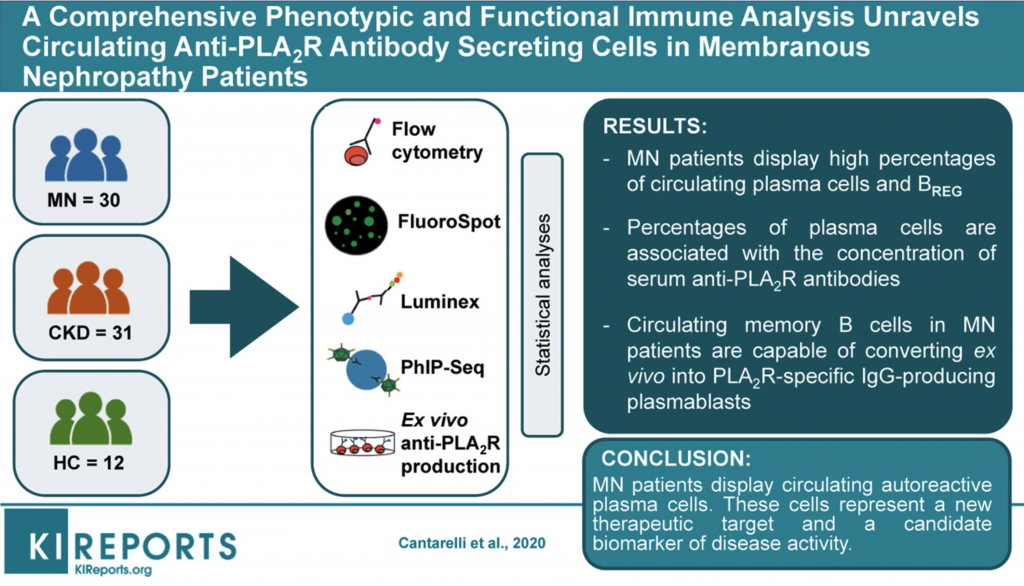Introduction: Primary membranous nephropathy (MN) is characterized by the presence of antipodocyte antibodies, but studies describing phenotypic and functional abnormalities in circulating lymphocytes are limited.
Methods: We analyzed 68 different B- and T-cell subsets using flow cytometry in 30 MN patients (before initiating immunosuppression) compared with 31 patients with non-immune-mediated chronic kidney disease (CKD) and 12 healthy individuals. We also measured 19 serum cytokines in MN patients and in healthy controls. Lastly, we quantified the ex vivo production of phospholipase A2 receptor (PLA2R)-specific IgG by plasmablasts (measuring antibodies in culture supernatants and by the newly developed FluoroSpot assay [AutoImmun Diagnostika, Strasberg, Germany]) and assessed the circulating antibody repertoire by phage immunoprecipitation sequencing (PhIP-Seq).
Results: After adjusting for multiple testing, plasma cells and regulatory B cells (BREG) were significantly higher (P < 0.05) in MN patients compared with both control groups. The percentages of circulating plasma cells correlated with serum anti-PLA2R antibody levels (P = 0.042) and were associated with disease activity. Ex vivo-expanded PLA2R-specific IgG-producing plasmablasts generated from circulating PLA2R-specific memory B cells (mBCs) correlated with serum anti-PLA2R IgG antibodies (P < 0.001) in MN patients. Tumor necrosis factor-α (TNF-α) was the only significantly increased cytokine in MN patients (P < 0.05), whereas there was no significant difference across study groups in the autoantibody and antiviral antibody repertoire.
Conclusion: This extensive phenotypic and functional immune characterization shows that autoreactive plasma cells are present in the circulation of MN patients, providing a new therapeutic target and a candidate biomarker of disease activity.
Visual abstract:

